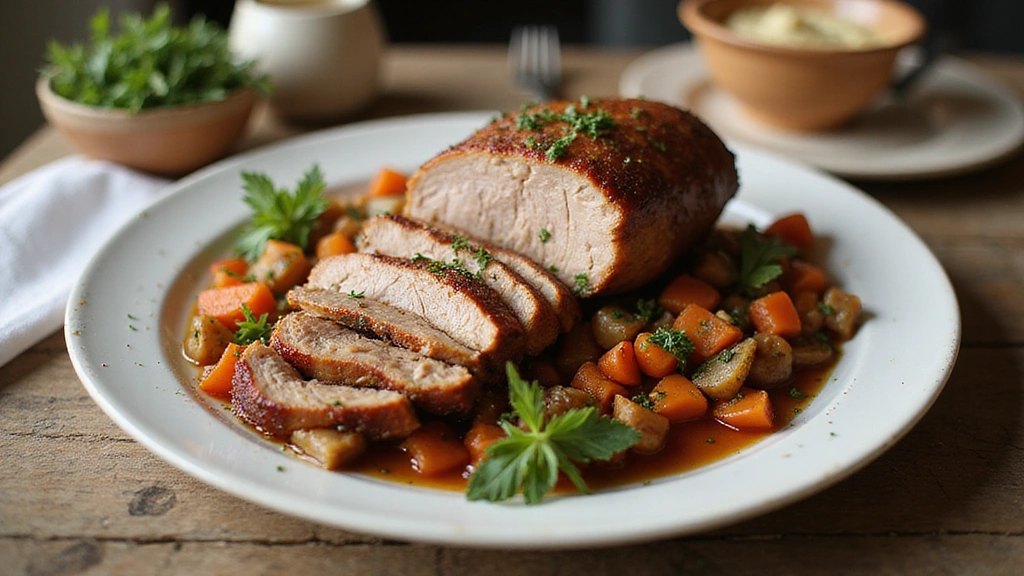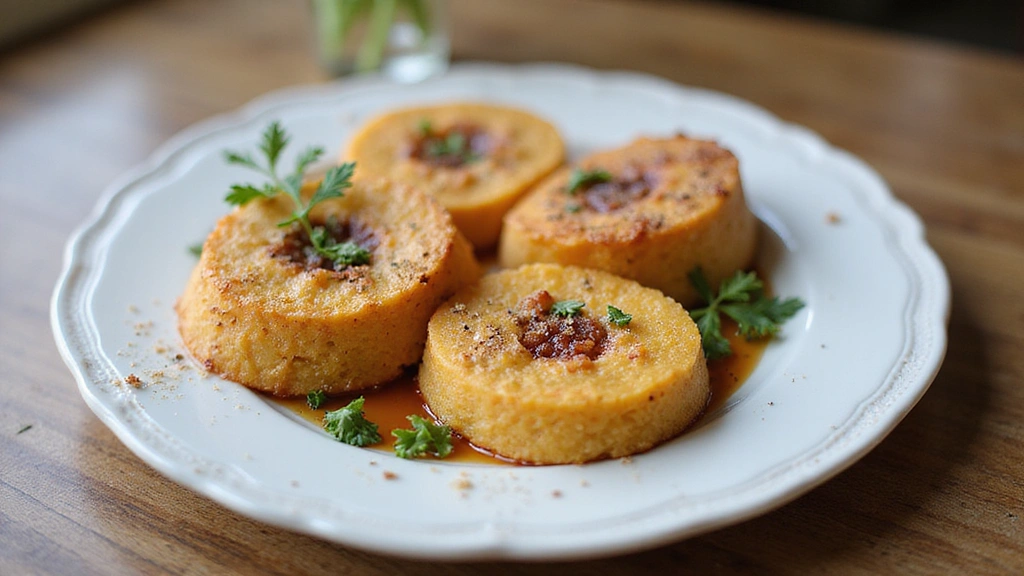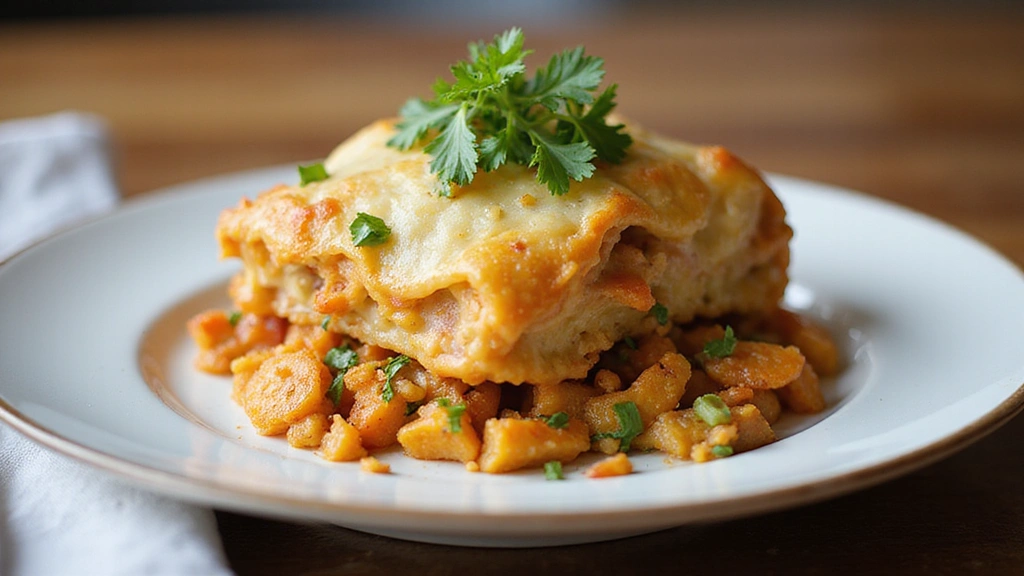Ground chicken recipes offer a versatile and healthy alternative to traditional beef dishes.
With their light and savory flavor, these recipes can easily be adapted to suit a variety of tastes and dietary needs.
I first encountered the versatility of ground chicken recipes during a wellness retreat focused on clean eating.
Perfect for any season, these dishes provide a comforting yet nutritious option for family meals or entertaining guests.
Whether you’re striving for health-conscious choices or simply looking to explore new culinary horizons, ground chicken recipes deliver flavorful results with ease.
The History and Cultural Significance
• Ground Chicken Recipes traces its origins to Southeast Asia, where it was originally created by local chefs seeking a lighter alternative to pork or beef.
• The dish evolved over decades as cooking techniques and spices were introduced through trade, eventually becoming the beloved version we know today.
• In Thai culture, this dish traditionally appears at gatherings and is a staple in everyday meals, symbolizing health and balance.
• While many variations exist across different regions, the authentic version maintains a delicate balance of herbs and spices that sets it apart from imitations.
Recipe Overview
Nutritional Information (per serving)
Essential Equipment Guide
Non-stick Skillet: A non-stick skillet is essential for cooking ground chicken evenly without it sticking, ensuring a smooth cooking process. Alternatives like cast iron can work, but require more oil.
Wooden Spoon: Using a wooden spoon helps break up the ground chicken without damaging non-stick surfaces, providing more control over consistency.
Meat Thermometer: This tool ensures that the ground chicken is cooked to a safe internal temperature of 165°F, avoiding undercooking.
Ingredients
For the Chicken
|
| Amount | Ingredient | Notes |
|---|---|---|
| 1 pound | ground chicken | lean, preferably organic |
Seasonings
| Amount | Ingredient | Notes |
|---|---|---|
| 1 tablespoon | olive oil | adds richness |
| 2 cloves | garlic | minced, for aromatic flavor |
| 1 teaspoon | ginger | grated, adds warmth |
Vegetables
| Amount | Ingredient | Notes |
|---|---|---|
| 1 cup | bell pepper | diced, adds color and sweetness |
| 1/2 cup | onion | finely chopped, for depth |
For the Sauce
| Amount | Ingredient | Notes |
|---|---|---|
| 2 tablespoons | soy sauce | low sodium, adds umami |
| 1 tablespoon | fish sauce | enhances savory flavor |
| 1 teaspoon | honey | for a hint of sweetness |
Preparation Methods
Sautéing: This technique involves cooking ingredients quickly in a small amount of oil over high heat. It is important for sealing in flavors and moisture in the ground chicken. Mastering sautéing involves constant stirring and attention to avoid burning.
Deglazing: Adding liquid (such as the sauce) to the hot pan helps lift caramelized bits, enhancing the dish's flavor. Use a spatula to scrape the pan while adding liquid for best results.
Simmering: After combining ingredients, simmering allows flavors to meld together over low heat. Maintain a gentle bubble to avoid drying out the chicken and ensure even cooking.
Step 1: Prepare Ingredients

Gather all ingredients and equipment for ease of access.
Chop the bell pepper and onion, and mince the garlic and ginger.
Organize your workspace to ensure a smooth cooking process.
Ensure all ingredients are room temperature for even cooking.
Step 2: Heat the Skillet
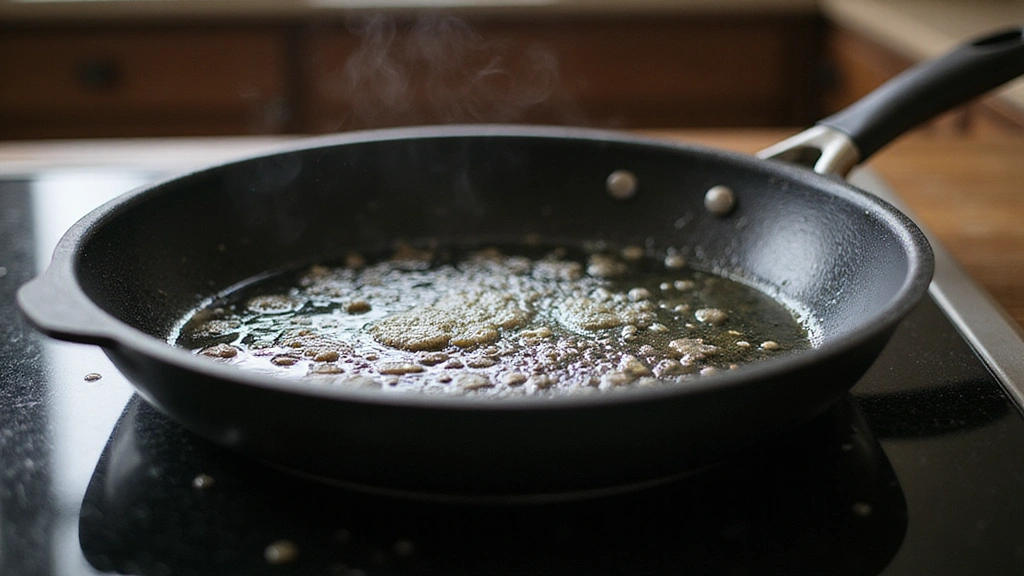
Place the non-stick skillet on medium-high heat.
Add olive oil and let it heat until shimmering.
Ensure the oil is hot before adding ingredients to prevent sticking.
Swirl the oil to coat the bottom of the skillet evenly.
Step 3: Sauté Aromatics
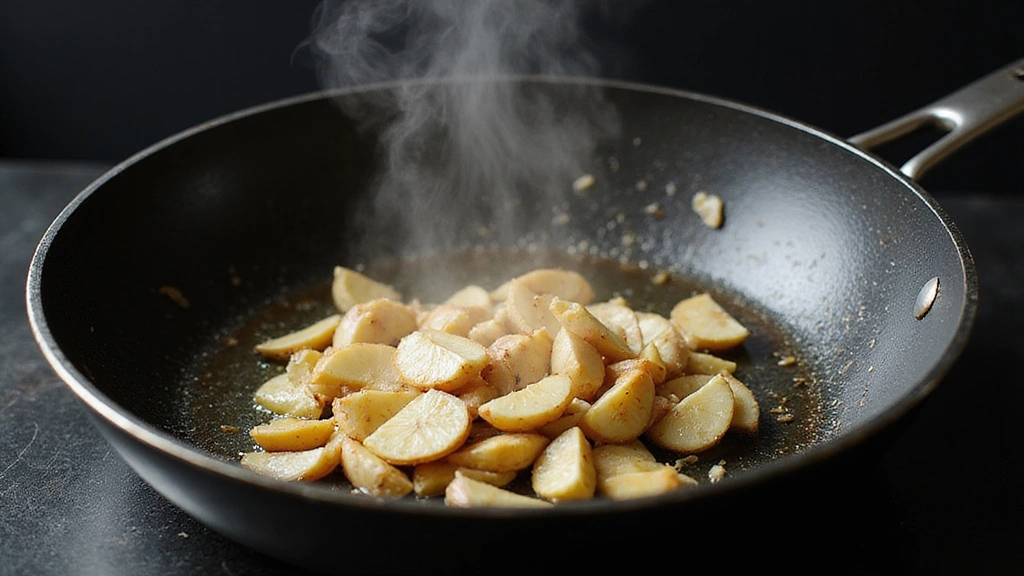
Add minced garlic and ginger to the hot skillet.
Stir constantly for 30 seconds until fragrant.
Be careful not to burn the garlic as it can turn bitter.
Ensure the ginger is evenly distributed for balanced flavor.
Step 4: Cook Ground Chicken

Add ground chicken to the skillet with the aromatics.
Break up the chicken using a wooden spoon for even cooking.
Cook until the chicken is no longer pink, about 5 minutes.
Ensure chicken is fully crumbled and cooked through.
Step 5: Add Vegetables

Add chopped bell pepper and onion to the skillet.
Stir to combine with the cooked chicken.
Cook until vegetables are slightly softened, about 3 minutes.
Ensure vegetables maintain some crispiness for texture.
Step 6: Prepare the Sauce
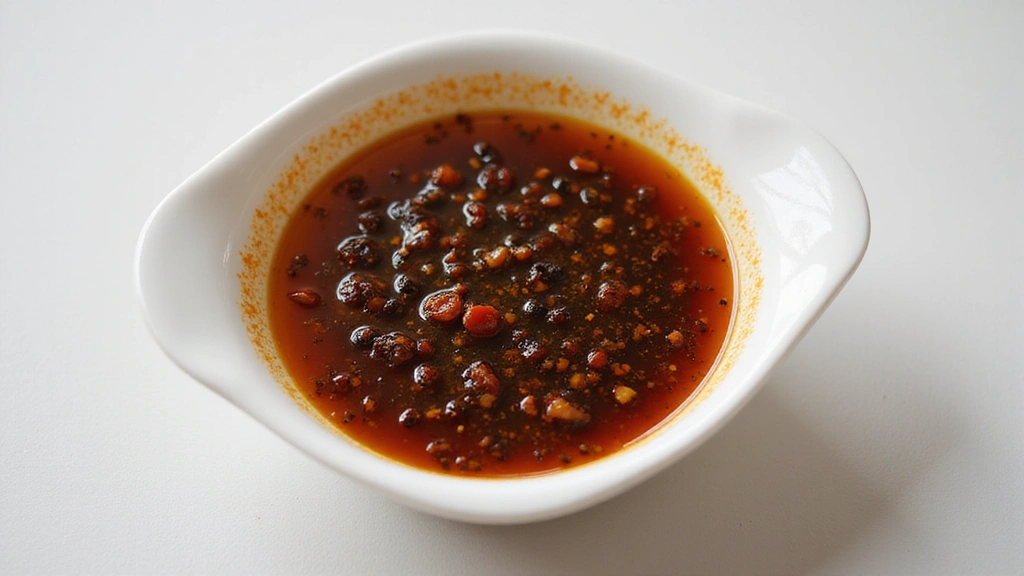
In a small bowl, combine soy sauce, fish sauce, and honey.
Mix well until honey is fully dissolved.
Taste and adjust the seasoning if desired.
Ensure the sauce is well-balanced before adding to the skillet.
Step 7: Deglaze the Pan
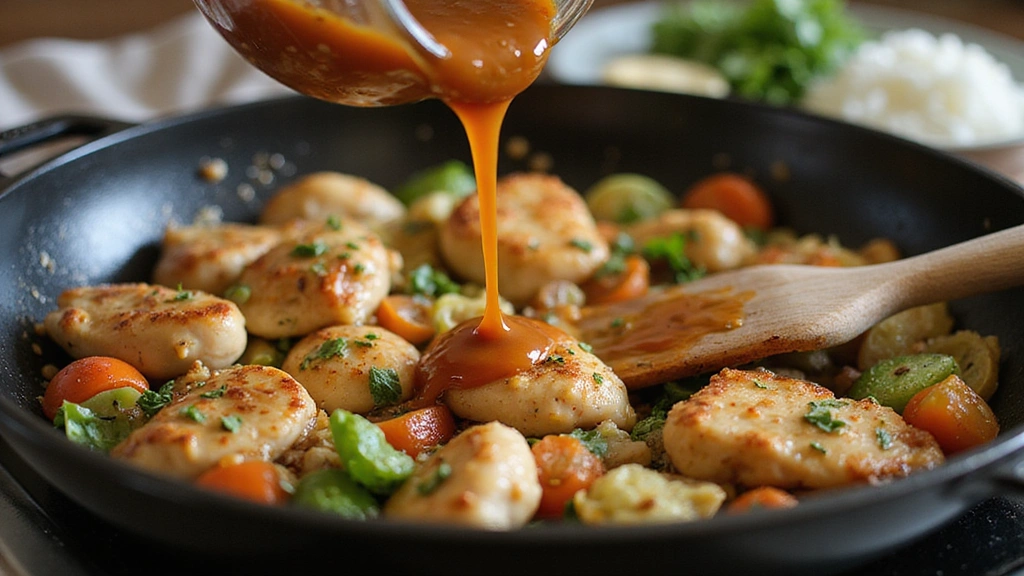
Pour the prepared sauce into the skillet over the chicken and vegetables.
Stir to coat all ingredients evenly with the sauce.
Scrape the bottom of the skillet to lift any caramelized bits.
Ensure the sauce is evenly distributed for consistent flavor.
Step 8: Simmer to Finish

Reduce the heat to low and let the mixture simmer.
Allow it to cook for an additional 5 minutes for flavors to meld.
Check for doneness by tasting the sauce and adjusting seasoning if necessary.
Ensure the dish is heated through and flavors are well integrated before serving.
Critical Timing and Temperature Guide
Sautéing Aromatics: Cook the garlic and ginger for 30 seconds until fragrant, avoiding any browning which indicates burning.
Cooking Chicken: Cook ground chicken over medium-high heat until it reaches an internal temperature of 165°F, ensuring it's fully cooked.
Simmering: Maintain a gentle simmer for 5 minutes, watching for a cohesive sauce and tender vegetables, avoiding high heat to prevent drying.
Pro Tips for Ground Chicken Recipes
• Ingredient Selection: Choose organic, lean ground chicken for the best flavor and texture, avoiding overly processed options.
• Preparation Secret: Chilling the ground chicken briefly before cooking makes it easier to break apart while sautéing.
• Temperature Management: Ensure the skillet is hot before adding chicken to prevent sticking and promote even cooking.
• Texture Enhancement: Stirring constantly while cooking helps achieve a finer, more consistent texture in the ground chicken.
• Flavor Layering: Add ingredients in stages, starting with aromatics, to build depth and complexity in the dish.
• Make-Ahead Strategies: Prepare the sauce up to a day in advance and store it in the refrigerator for quick meal assembly.
• Restaurant-Quality Finishing Touches: Garnish with fresh herbs like cilantro for a burst of color and flavor.
• Equipment Optimization: Properly preheat the skillet and use a wooden spoon to prevent scratching and maintain the integrity of non-stick surfaces.
Troubleshooting Common Issues
• Texture Too Dense: Caused by overpacking the skillet; prevent by cooking in batches if necessary.
• Flavors Unbalanced: Often due to incorrect sauce proportions; fix by adjusting soy sauce or honey as needed.
• Chicken Sticking to Pan: Results from insufficient oil or preheating; ensure the skillet and oil are hot before adding chicken.
• Vegetables Too Soft: From overcooking; add them later in the cooking process to maintain some crunch.
• Sauce Too Thin: Caused by excess liquid; simmer longer to reduce or add a cornstarch slurry to thicken.
Variations and Regional Differences
• Thai-Style Variation: Incorporates basil and chili peppers for a spicier, more aromatic version.
• Italian-Style Variation: Uses tomato sauce, garlic, and oregano for a Mediterranean twist.
• Mexican-Style Variation: Includes cumin, chili powder, and black beans for a hearty, flavorful dish.
• Chinese-Style Variation: Adds hoisin sauce and water chestnuts for a sweet and crunchy contrast.
Food Science Behind the Recipe
• Maillard Reaction: This browning process occurs when cooking chicken, enhancing flavor and aroma.
• Emulsification: The combination of oil and water-based sauces creates a cohesive, flavorful sauce.
• Heat Transfer: Conductive heat from the skillet cooks the chicken evenly, aided by stirring for uniformity.
Frequently Asked Questions
What's the most common mistake people make when preparing ground chicken recipes? Overcrowding the pan, which leads to steaming rather than sautéing.
Can I substitute turkey for chicken in these recipes? Yes, ground turkey works well as a substitute with similar cooking times.
How can I make the dish spicier? Add chili flakes or fresh chili peppers to the dish for more heat.
Is it necessary to use fish sauce in the recipe? No, but it adds depth; soy sauce alone can suffice if preferred.
How do I prevent the chicken from drying out? Avoid overcooking and ensure the sauce coats the chicken well.
Can I freeze leftovers? Yes, store in an airtight container and freeze for up to 3 months.
What side dishes complement this recipe? Steamed rice or a fresh salad pairs well with ground chicken dishes.
How can I add more vegetables to the recipe? Incorporate zucchini, carrots, or peas for added nutrition and color.
Serving and Presentation Guide
• Traditional Presentation: Serve in a large bowl, garnished with fresh herbs and lime wedges.
• Family-Style Presentation: Present on a platter with serving spoons for communal dining.
• Modern Plating: Plate individually, with a small mound of rice and chicken topped with microgreens.
• Buffet Style: Offer as part of a larger selection, with small serving bowls for guests to assemble their plates.
Conclusion
These ground chicken recipes provide a healthy, flavorful option for any meal.
With their versatile nature, they can easily be adapted to suit personal tastes and preferences.
I encourage you to explore these recipes and experience the delicious balance of flavors and textures they offer.
Embrace the opportunity to create nutritious meals that satisfy both body and palate.

